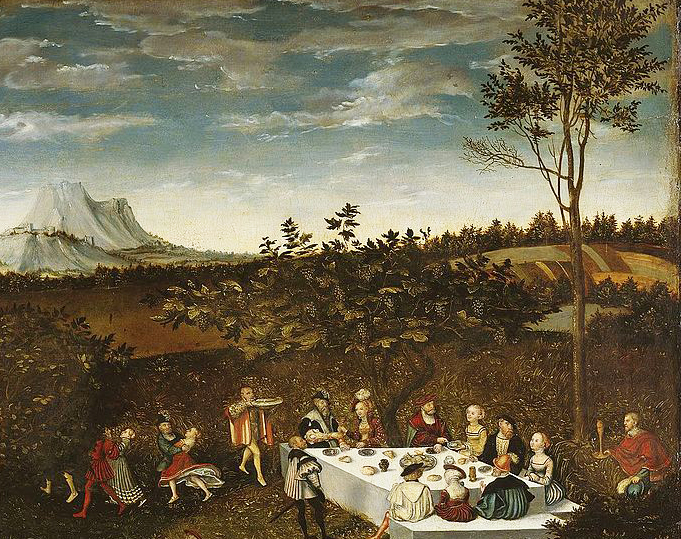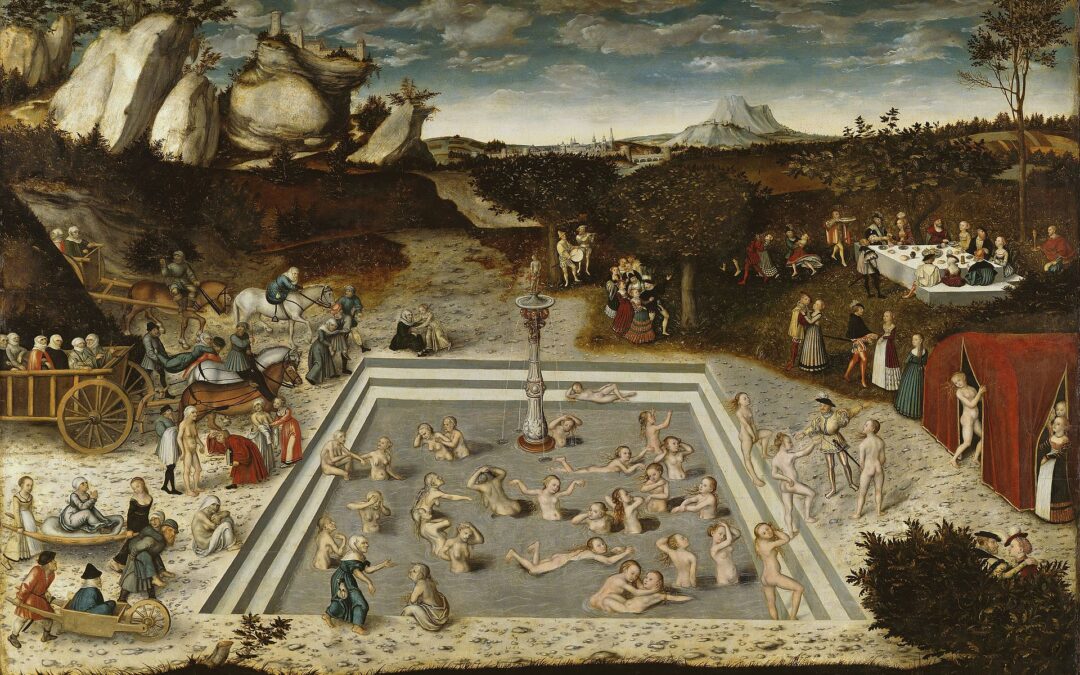Cranach’s paintings often conflate the spiritual and erotic, particularly The Fountain of Youth and The Golden Age, both completed in 1546. The subjects seem pagan, but his friendship with Martin Luther deeply influenced Cranach. The Fountain of Youth narratives the myth of the old arrive decrepit, bath, and emerge youthful, sexually active, and hungry.
Cranach has it both ways. The visually elderly, decrepit women and men arrive at the fountain, disrobe and bathe.* Emerging with regained youth and vigor, the bathers may now exercise their newly recovered youth spiritually or erotically. A naked woman standing beside a red curtain indicates partners. The more spiritual dine at a table set with a meal of bread, fish, and wine.
The benefits are astounding. (Sign me up!)
*Bathing in the Middle Ages and the Renaissance is often associated with sexual vigor. Cranach provides an alfresco feast at a table that seems staid by comparing the action elsewhere in the fountain or the woman’s lascivious pose entering the red tent. The detail tucked in the left background shows clothed picnickers dining on wine, bread, and fish. Christian symbolism
See Lucas Cranach, the Elder’s The Fountain of Youth (1546c.). Gemäldegalerie, Berlin.

